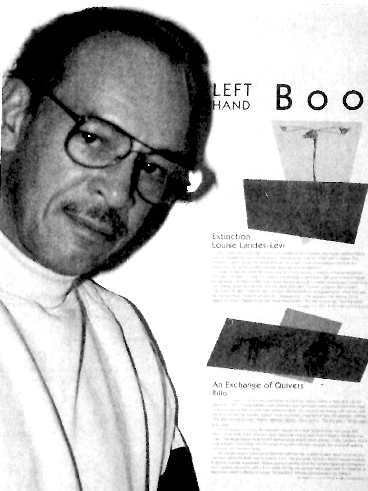|
|
Bill Keith |
William “Bill” Keith (January 20, 1929 - September 1, 2004) was an American artist, born in New Rochelle, who began his artistic life as a painter, but moved into photography and visual poetry. His visual poetry ran a full gamut from calligrams inspired by Apollinaire and other early 20th Century French poets to Lettrisme to the Minimalism and Op Art of the 1960s. As his work developed, he concentrated increasingly on African and African-American themes and sources. The development toward African roots and branches lead away from the Roman alphabet and more toward the store of iconography and symbolism from Egypt to South Africa to the American diaspora. As he progressed, he developed graphic techniques suggested by textiles, wood carvings, bronze casts, ceramics, and other indigenous arts. He built up rhythmic patterns through repetitions of graphic elements from sources as diverse as road signs and zebra stripes.
"Pictographs mixes different types of picture-writing with fragments of prose in a formal arrangement linked to West African visual traditions. Keith’s constructions employ designs intended to be scanned metrically, a visual counterpart to the off-beat phrasing of melodic accents in African and Afro-American music. Keith’s “writing” seems suspended between two others: painting and music. The staggered siting of glyphs and signs marks the subtle crossover from picture language to picture theory. Text runs in strips against a black background, so so much as arguments to follow as seams joining master and slave narratives. In Keith’s discourse on his situation as a poet in a late capitalist society, a picture emerges of an artist who in mastering his art becomes a slave to it." [-––from the back cover copy of the book]. sources: notes in Pictograms, Stalking the Minotaur, Adinka Poems, and his Wiki page. |
Igor Satanovsky's Facebook page for Bill Keith
EPC Digital Library
- Sphinx (Xerolage, 1992): pdf (or purchase the book from Xerolage)
- Pictographs (Left Hand Books, 1996): pdf
- Stalking the Minatour, afterword by Karl Young (Koja Press, 2003): pdf (or purchase the book from Koja)
- Adinkra Poems (Offerta Speciale Visual Editions, 2003): pdf
Geoff Huff on Bill Keith
These works are made available with the permission of the Estate of Bill Keith
And with special thanks to Igor Satanovsky.
Page edited by Charles Bernstien in Oct., 2019
